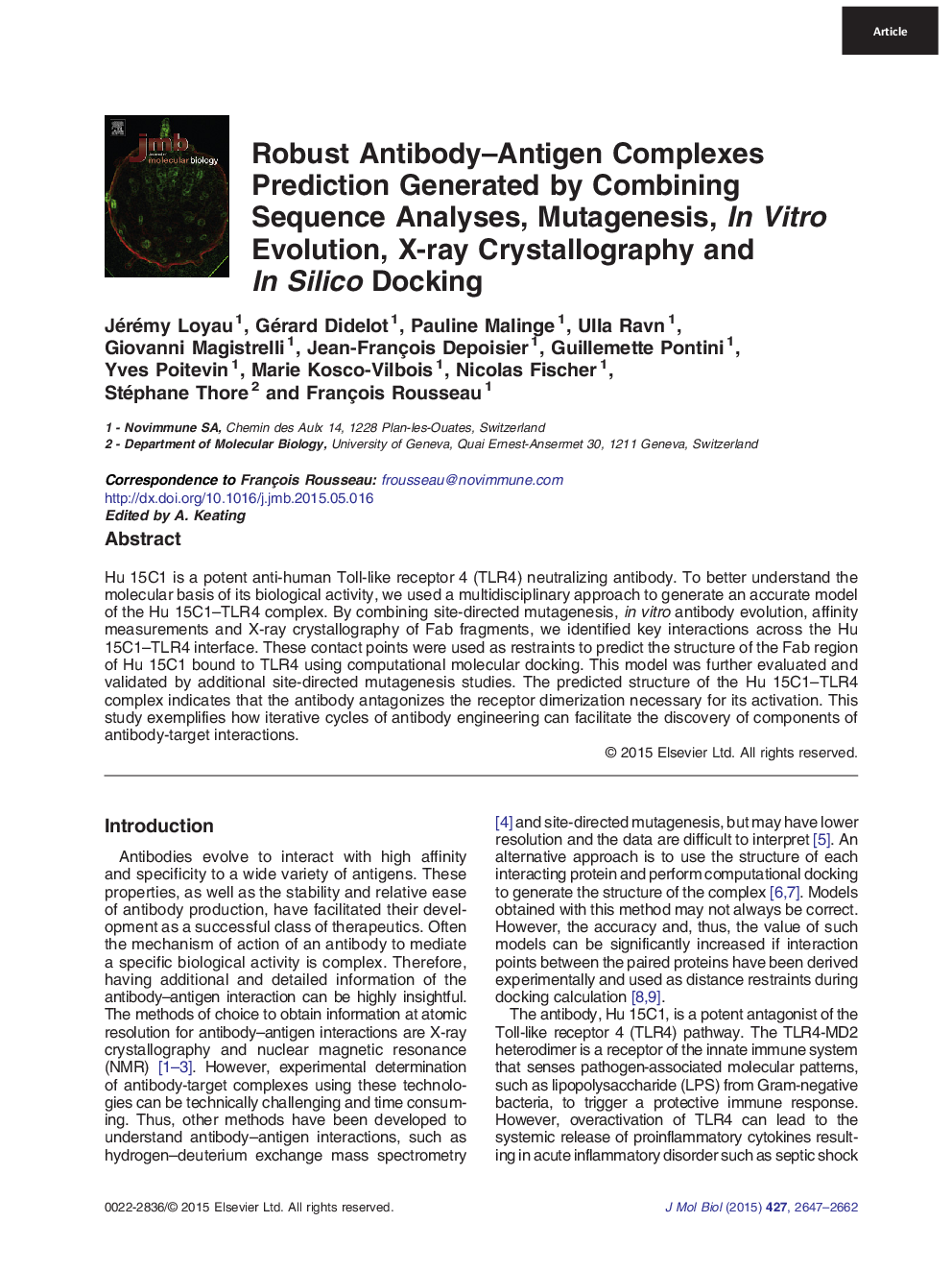| Article ID | Journal | Published Year | Pages | File Type |
|---|---|---|---|---|
| 2184290 | Journal of Molecular Biology | 2015 | 16 Pages |
•We engineered the species specificity of a blocking antibody-targeting human TLR4.•We identified pairs of interacting residues at the antibody-target interface.•Interacting residues were converted as distance restraints for computational docking.•We solved antibody Fab structures by X-ray crystallography.•A three-dimensional model of the antibody-target complex was generated.
Hu 15C1 is a potent anti-human Toll-like receptor 4 (TLR4) neutralizing antibody. To better understand the molecular basis of its biological activity, we used a multidisciplinary approach to generate an accurate model of the Hu 15C1–TLR4 complex. By combining site-directed mutagenesis, in vitro antibody evolution, affinity measurements and X-ray crystallography of Fab fragments, we identified key interactions across the Hu 15C1–TLR4 interface. These contact points were used as restraints to predict the structure of the Fab region of Hu 15C1 bound to TLR4 using computational molecular docking. This model was further evaluated and validated by additional site-directed mutagenesis studies. The predicted structure of the Hu 15C1–TLR4 complex indicates that the antibody antagonizes the receptor dimerization necessary for its activation. This study exemplifies how iterative cycles of antibody engineering can facilitate the discovery of components of antibody-target interactions.
Graphical abstractFigure optionsDownload full-size imageDownload high-quality image (309 K)Download as PowerPoint slide
